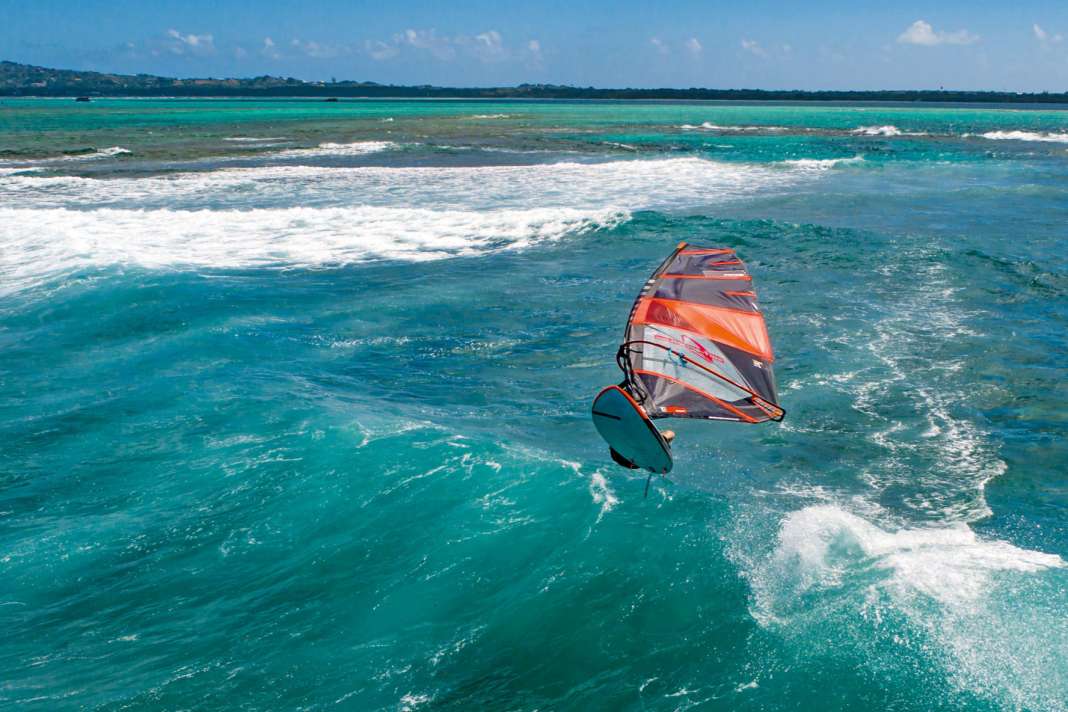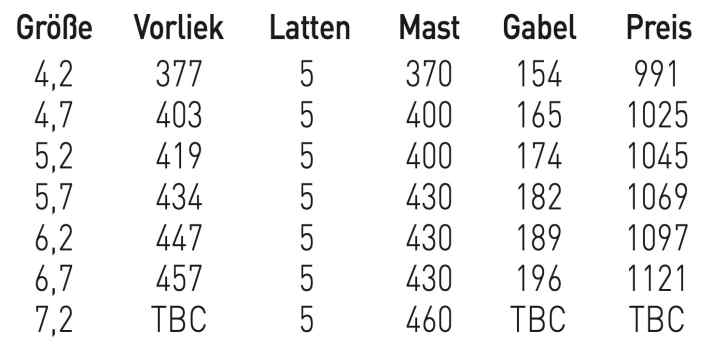





The equipment of the RRD Move is classy - helpful trim markings, solid materials and a good protector leave nothing to be desired. Ideally, the Move should be trimmed up to the printed trim point; the fork should only be tightened moderately so as not to stifle the already rather flat profile.
In the planing phase, the Move is agile in the hand; those who can feel the angle of attack with technique have an advantage here. If you are more passive on the rig, you need a little more wind to planing. Until the RRD really loads up and lets the board fly over the fin, a little more basic wind is needed, but then the sail reaches a high top speed and keeps the pressure point stable for a pleasingly long time.
The Move has particular strengths in manoeuvres, ducktacks, loops, jibes or duckjibes, where you benefit from a flat, wave-like profile set-up that ensures very neutral handling.
Surf summary of the RRD Move 5.7
The RRD Move is not one of the steam hammers in light winds, but is convincing as a handy manoeuvre sail for bump & jump and surf. It's not ideal for powering single fin boards, but is absolutely convincing for manoeuvring, basic freestyle and wave riding.
Neutrality, wave suitability
Driving stability

Technical data RRD Move 5.7
- Price: 1069 Euro
- Mast used: Dynamic 430 RDM C 80, 1.90 kg, 80 % carbon; price: 529 euros
- Sail weight: 3.65 kg
- Mast weight: 2.00 kg
- Fork recess: 100-152 cm
- Further information at robertoriccidesigns.com

